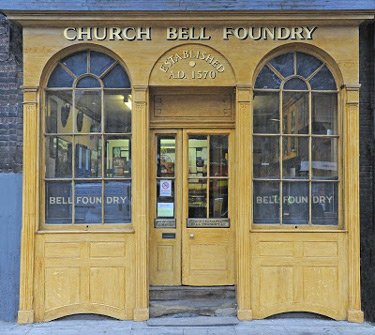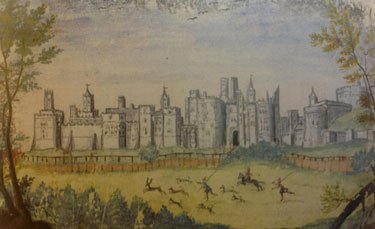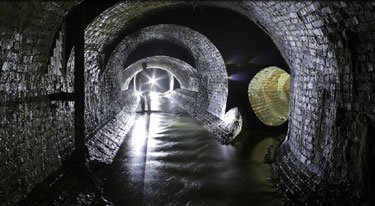Category Archive 'London'
07 May 2017


A reconstruction of Roman Londinium in AD 250.
Instapundit found a BBC report today, but the story actually originated last Fall.
The London Times reported last September 23rd:
It was an unremarkable Roman cemetery, containing the bodies of ordinary people. They lived and died on the banks of the Thames, making a living in the poorer and dirtier districts of Roman Londinium.
When an analysis of the skeletons came through, no one expected a result that could change our view of the history of Europe and Asia. But that is what they seem to have found, because two of the skeletons, dated to between the 2nd and 4th century AD, were Chinese.
Here at the most westerly point of the known world, in the cultural backwater of ancient Britain, lived people who came from its easternmost extremity. How did they get there?
To the Romans, the Chinese were a mysterious civilisation: technologically advanced, disquietingly powerful, and purveyors of, according to Seneca, obscene garments that corrupted the empire’s womanhood. To the Chinese, the Romans were a moderately intriguing civilisation with, according to one account, weak and pliant rulers.
It would be 1,000 years before the travels of Marco Polo would help properly to bring the culture of the east to the people of the west. Now, though, that history has to be revised.
After the excavation of a cemetery in Southwark, new skull analysis techniques identified a multicultural community containing four people who were ethnically African and two Asian, probably Chinese.
The find is spectacular but it is also mysterious, according to Rebecca Redfern from the Museum of London. She has no idea how they had ended up lying in this cemetery, so far from home.
———————
Kristina Killgrove (who is a Biological Anthropologist) expressed some reservations, in Forbes:
Several British news outlets today ran a story with headlines about Chinese people in Roman Britain. While there is no doubt that the Roman Empire was cosmopolitan, and it is entirely likely that people of East Asian ancestry will be found in all parts of the Empire, we need to take a step back from the hype and look at the data.
The new study in question is by Rebecca Redfern and colleagues, out in the October issue of the Journal of Archaeological Science. The researchers looked at 22 skeletons from the Lant Street cemetery in the London borough of Southwark, dating to the 2nd-4th century AD. In order to figure out where people might be from, they examined oxygen isotopes from the teeth, carbon and nitrogen isotopes from the bones, and the shape of the skull, correlating those data where possible with burial evidence.
The data that Redfern and colleagues produced are really quite interesting. The oxygen isotope values, which were isolated from 19 of these people, range widely — too much to be explained by local variation in water sources. This means that many of them came to London from elsewhere, some time after childhood. Far fewer of the individuals produced good data for carbon and nitrogen analysis of diet — just half of the sample was testable, and those data reveal a diet similar to what was eaten in selected other parts of the Empire. (They did not compare the data to Rome itself, for example, only to Portus Romae, south-coastal Velia, and Herculaneum in Italy and to Leptiminus in Tunisia.)
But the new method that Redfern and colleagues use to figure out ancestry is not ancient DNA analysis, but a statistical modeling of variations in the skulls and teeth that could be linked to ancestral differences. In short, they employ a method similar to what forensic anthropologists use to figure out if an unknown skeleton is of Asian, African or European ancestry.
The shortcomings of this method, however, are considerable and are outlined by Redfern and colleagues in their article. For example:
The fact that many of the samples were fragmented means that 41% of the sample had only two traits to score. As the researchers write, “This degree of missing data can affect classification accuracies, particularly among the sample having two or less (sic) traits.”
“We recognise that this is a subjective approach… and that many of the individuals used to generate these methods derive from modern populations outside of the territories that formed the Roman Empire. […] The population affiliation divisions used here may disguise or fail to find many affiliations because they are subjective, and morphology varies between individuals and over time,” they further note. This is problematic because bioarchaeologists cannot be sure how much the skull and tooth shapes have changed over 2,000 years. Comparing an ancient population with a modern one may not yield accurate results. (For example, when I put metric data from skeletons from Rome into FORDISC, a software program that compares metric data from skulls, the program happily classifies them into Asian samples.)
“The method development was particularly lacking in north African and southern Mediterranean populations, whose DNA shows a greater degree of genetic diversity compared to sub-Saharan and more northern ones. Therefore, the results must be understood in their temporal and spatial context, and the biases introduced by the methods acknowledged.” With few comparative samples from contemporary Africa and the southern Mediterranean, which are much more likely to be the origin of Roman Britons than is Asia, this means there may be bias introduced into the interpretation of the skull and tooth shapes.
This article is a remarkable attempt to correlate three different isotopes and skeletal morphology to answer questions about the diversity of Roman Britain in the later Empire, and it succeeds in showcasing that diversity even in this small sample. But it does not show, as the tabloids have been crowing, that there were Chinese in Roman London. The statistical results are intriguing, but the oxygen data from the two so-called Asians seem to be within the range of others in the sample, and only one produced dietary isotope data. For a slam-dunk, they need DNA. If and when they produce this, though, establishing a solid correlation between DNA from the Roman era and the results of the statistical method on the Roman skulls and teeth has the potential to help other bioarchaeologists assess ancestry without doing expensive destructive analysis.
RTWT
08 Apr 2017


More on the Great British Book Heist that took place last January in Daily Beast:
Late in the night on Jan. 29, three still-unknown thieves drilled through the skylight of a building near Heathrow Airport and rappelled 40 feet to the floor, bypassing the security alarms.
They went straight to six specific crates that contained three dealers’ worth of books that were en route to the California International Antiquarian Book Fair in Oakland.
Over the course of several hours, they unloaded the books they wanted into duffel bags, belayed their loot to the roof, and took off in a waiting van. The haul totaled nearly $2.5 million.
“Behind these books there is a lot of work because we have to search to try to find out where the books are—auction houses, collectors, colleagues—and there’s big research behind these books,†Alessandro Meda Riquier, one of the affected dealers, tells Sky News. “They are not only taking money away from me but also a big part of my job.â€
Riquier was the owner of several of the most noteworthy tomes that were taken in the heist. The most expensive book was a second edition of Copernicus’s On the Revolutions of the Heavenly Spheres from 1566 in which the astronomer introduced his revolutionary theory that the sun—not the Earth—is the center of the universe.
That book alone is worth over $250,000. Among the rest of the trove are several rare editions of Dante’s Divine Comedy and a smattering of Galileos, Newtons, and da Vincis, among other titles from the luminaries of the early sciences.
All in all, it is the quantity of books stolen rather than the individual titles that make this heist so significant.
“The books were there for only a short time in that warehouse, and this is a very exotic commodity so this is not something that the average person thinks that they can sell,†Jeremy Norman, a rare book dealer with a specialty in the early sciences, tells The Daily Beast. “I think it’s a real mystery. You really wonder how they knew the stuff was there, and the timing of it, and how they were shipped off, and what the real motivation was.â€
Several theories have been offered as to why the thieves went after this quarry. One suggests that this may have been a “made to order†theft, one in which a buyer specifically commissioned the thieves to take these titles.
Similar to fine art, stolen antique books are very difficult to sell on the legitimate market—and thereby net the title’s full value. When a rare book crime becomes known, organizations like the Antiquarian Booksellers Association of America (ABAA) quickly take action to alert their members to the volumes that were stolen so dealers can be on the lookout for anyone trying to offload a tainted treasure.
Full Story.
Earlier report.
15 Feb 2017


The Guardian reports on a highly unusual case of burglary.
Antiquarian books worth more than £2m have been stolen by a gang who avoided a security system by abseiling into a west London warehouse.
The three thieves made off with more than 160 publications after raiding the storage facility near Heathrow in what has been labelled a Mission: Impossible-style break-in.
The gang are reported to have climbed on to the building’s roof and bored holes through the reinforced glass-fibre skylights before rappelling down 40ft of rope while avoiding motion-sensor alarms.
Scotland Yard confirmed that “a number of valuable booksâ€, many from the 15th and 16th centuries, were stolen during the burglary in Feltham between 29 and 30 January.
According to the Mail on Sunday, one dealer lost £680,000 worth of material. Experts said the most valuable item in the stolen haul was a 1566 copy of Nicolaus Copernicus’s De Revolutionibus Orbium Coelestium, worth about £215,000.
Among the other books stolen were early works by Galileo, Isaac Newton, Leonardo da Vinci and a 1569 edition of Dante’s Divine Comedy.
Alessandro Meda Riquier, a rare book dealer, said a number of his volumes had been taken. He told Sky News: “I’m very upset because this is not something you can buy everywhere. Behind these books there is a lot of work because we have to search to try to find out where the books are – auction houses, collectors, colleagues – and there’s big research behind these books.â€
He added: “They are not only taking money away from me but also a big part of my job.â€
Brian Lake, of the Antiquarian Booksellers Association, said: “Nothing like this has hit the rare books trade before.†Authorities have not yet ascertained what will become of the books but it is thought that the most likely scenario is that they were stolen to order.
Complete story.
Hat tip to Karen L. Myers.
02 Dec 2016


Rafe Heydel-Mankoo shared some sad news.
Does any city have a sound more instantly recognisable than the toll of Big Ben? The mighty bell’s unmistakable hourly peal and the familiar Westminster Chime of its sister bells (“All through this hour; Lord, be my guide; And by Thy power; No foot shall slide”) are famous throughout the world, immediately conjuring up evocative images of a foggy day in old London town.
Bells have echoed through London’s soundscape for centuries.
When London was a walled city, church bells rang out the curfew every evening to signal the locking of the city gates. Traditionally, true cockneys are said to be born within earshot of “Bow Bells†(the bells of the church of St. Mary-le-Bow in Cheapside), and generations of children have grown up singing “Oranges and Lemons say the bells of St. Clementsâ€, a nursery rhyme identifying the bells of various City churches.
Since 1570 many of London’s most important bells have been produced by the Whitechapel Bell Foundry, the oldest manufacturing company in Britain and the most famous bell manufacturer in the world.
In 1752 America’s famous Liberty Bell was struck here and just over a century later, in 1858, the Foundry cast Big Ben, its most famous bell. Visitors to the Whitechapel premises walk through a cross section of Big Ben upon entering the front door.
Over the centuries, the bells of the Whitechapel Foundry have rung out over cities as far afield as imperial St. Petersburg, Chennai, Washington DC and Toronto.
Alas, I am sad to announce that despite this magnificent history, after over two centuries in the same ancient building, this great London institution is to extinguish its Whitechapel furnace and close its doors forever in May 2017. The building is likely to be sold. What will become of the almost 450 year old company remains to be seen.
Read the whole thing.
19 Oct 2016


Atlas Obscura:
Earlier this October, at a ceremony at the Royal Courts of Justice, London paid its rent to the Queen. The ceremony proceeded much as it had for the past eight centuries. The city handed over a knife, an axe, six oversized horseshoes, and 61 nails to Barbara Janet Fontaine, the Queen’s Remembrancer, the oldest judicial position in England. The job was created in the 12th century to keep track of all that was owed to the crown.
In this case, the Remembrancer has presided over the rent owed on two pieces of property for a very long time—since 1235 in one case, and at least 1211 in the other. Every year, in this Ceremony of Quit Rents, the crown extracts its price from the city for a forge and a piece of moorland.
No one knows exactly where these two pieces of land are located anymore, but for hundreds of years the city has been paying rent on them. The rate, however, has not changed—the same objects have been presented for hundreds of years. …
These two “quit rents†are not the only ones owed to the crown. London also owes a yearly token rent of 11 pounds on the “town of Southwark,†now a high-end area where Shakespeare’s Globe and the Tate Modern are located. Outside of London, landowners are on the hook for a variety of quit rents: a bucket of snow on demand, three red roses, a small French flag, a salmon spear. Some rents only kick in only if the king or queen visits: the renter must provide the crown with a bed of straw, in one agreement, and in another, the renter must offer a single white rose.
One landholder keeps his place only on the condition that, if the monarch shows up, he must “ride his horse into the sea, until the water reached the saddle girths, to meet his sovereign,†the Southam News Service reported. Another has to fight anyone the king wants him to. Possibly the best quit-rent ever conceived is this one: “three glasses of port on New Year’s Eve for the ghost of the King’s grandmother.â€
Read the whole thing.
08 Aug 2016

Bomb Sight is an interactive map project of the University of Portsmouth, allowing to viewer to see where each of more than 30,000 German bombs fell on London between 7 October 1940, and 6 June 1941, killing 30,000 people.
28 Feb 2016


London’s Cereal Killer Cafe
Apparently, a lot of them find it too much trouble to consume.
Fox News:
A study has found that America’s millennials are skipping out on cereal because it’s simply too much of an inconvenience.
(Yes, the cold kind that requires little more than pouring something into a bowl and then pouring milk over it.)
An astonishing 40 percent of millennials surveyed said they reach for something else, like a smoothie or breakfast bar, reported by The New York Times.
One of the biggest problems was with the washing up. “Almost 40 percent of the millennials surveyed by Mintel for its 2015 report said cereal was an inconvenient breakfast choice because they had to clean up after eating it,” it reported.
Another factor included the fact that many consumers don’t want to start their day with processed grains.
——————————-
But they’ve solved the problem in Blighty. London now has a cereal cafe to save you all the effort of serving it and cleaning up yourself.
The Sun:
Located a stone’s throw from the similarly kooky cat cafe, Cereal Killer has 120 types of cereals from across the world on offer – and twelve varieties of milk to pour over them, from plain old semi-skimmed to strawberry and lactose free.
And at £3.50 for a large bowl, it’s set to make a killing.
After opening its doors for the first time at 7am yesterday, over 100 people turned up within three hours, eager to indulge in exotic American delicacies like Poppin’ Fruity Pebbles – a cereal loaded with tongue-tingling popping candy – and marshmallow-laden Lucky Charms.
For those desperate for an extreme sugar rush – or simply wanting to sidestep the dentist by rotting a rogue wisdom tooth directly out of their jaw – there’s also the option to add on extra toppings including chocolate chips, crushed Kinder hippos and fresh fruit – at 50p a time.
But you don’t have to be adventurous to eat here, you can still enjoy a small bowl of plain cornflakes – for the price of a 750g box from Sainsbury’s.
Cereal Killer, which stays open until 10pm for anyone who fancies a cold, milky dinner, is the brainchild of Belfast-born twins Alan and Gary Keery, 32.
The idea came to them during an afternoon stroll in London when they both fancied a bowl of cereal, but couldn’t get one anywhere.
“We’re celebrating cereal,” said Alan. “It totally baffled us that people eat cereal every day at home – but never outside the home. It’s crazy it’s never been done before.”
13 Jan 2015

Last August images of the above plaque on a bench in a deliberately unidentified London Park (Don’t want the authorities taking away the joke) went viral attracting millions of views.
In reality, the plaque was installed as a prank by Jamie Maslin, an Australian novelist who was in a mischievous mood after having received a book rejection.
Maslin later distributed this (Photoshopped) image of a historical marker commemorating the fictitious Roger Bucklesby (modified from the real George Orwell marker).

Hat tip to Bird Dog.
16 Dec 2014



Travellers often have the best eyes for the beauties of the cities they visit, and some of the best views of London in the early seventeenth century have been come down to us in the album amicorum of Michael van Meer, a Flemish soldier who lived in London in the years 1614-1615. In this album we find marvelous images of the Tower, London Bridge and Windsor Castle, views Shakespeare and his contemporaries have seen.
The album is now kept at Edinburgh University Library, La. III. 283. It’s extensively discussed in June Schlueter’s The Album Amicorum & The London of Shakespeare’s Time. London, The British Library 2011.
Hat tip to Ratak Monodosico.
17 Oct 2014


Zythophile remembers today the victims of the London Beer Flood which occurred 200 years ago today:
Wherever you are at 5.30pm this evening, please stop a moment and raise a thought – a glass, too, if you have one, preferably of porter – to Hannah Banfield, aged four years and four months; Eleanor Cooper, 14, a pub servant; Elizabeth Smith, 27, the wife of a bricklayer; Mary Mulvey, 30, and her son by a previous marriage, Thomas Murry (sic), aged three; Sarah Bates, aged three years and five months; Ann Saville, 60; and Catharine Butler, a widow aged 65. All eight died 200 years ago today, victims of the Great London Beer Flood, when a huge vat filled with maturing porter fell apart at Henry Meux’s Horse Shoe brewery at the bottom of Tottenham Court Road, and more than 570 tons of beer crashed through the brewery’s back wall and out into the slums behind in a vast wave at least 15 feet high, flooding streets and cellars and smashing into buildings, in at least one case knocking people from a first-floor room. It could have been worse: the vat that broke was actually one of the smallest of 70 or so at the brewery, and contained just under 3,600 barrels of beer, while the largest vat at the brewery held 18,000 barrels. In addition, if the vat had burst an hour or so later, the men of the district would have been home from work, and the buildings behind the brewery, all in multiple occupancy, with one family to a room, would have been much fuller when the tsunami of porter hit them.
Read the whole thing.
Hat tip to Rafal Heydel-Mankoo.
15 Oct 2014


Kuriositas:
[T]he waters of the Fleet were renowned for being clear and sparkling. As the medieval city began to grow, mills, tanneries and meat markets sprang up along its banks. Water was vital to keep these industries functioning and growing and gradually the river was polluted with blood, sewage and other waste – it effectively became a waste tip, a handy repository to discard anything unwanted including the carcasses of dead livestock.
As a result, over the years the river became shallower and the water much slower than in previous generations, only exacerbating the burgeoning problem of the health hazard it now presented. It would silt up in the summer and although the spas and wells upstream remained open and functioning the Fleet in the city of London became an open sewer with a mix of slums and prisons on its banks. Something had to be done.
The Great Fire of London in 1666 provided that opportunity. The architect Sir Christopher Wren was afforded the chance of transforming the lower Fleet.
By 1680 this part of the river had been turned in to the New Canal. It was hailed as the Venice of England but its days were numbered from the very beginning.
It was poorly used as a canal and, despite its new clothes, it still stank to high heaven. … Within a generation it was no longer fit for purpose as a canal.
The river was channelled underground in the 1730s from Holborn to Fleet Street, which still bears its name. Decades later it was filled in and arched over from Fleet Street down to the river Thames and is covered by what is now New Bridge Street. …
[T]he final blow was to come in the 1860s. It was at this point that the sunken river was incorporated in to the new network of sewers – an astonishing piece of industrial scale engineering designed by the visionary civil engineer Joseph Bazalgette. A little later its upper reaches in Hamstead and Kentish Town disappeared forever as well.
Via Fred Lapides.

Feeds
|























